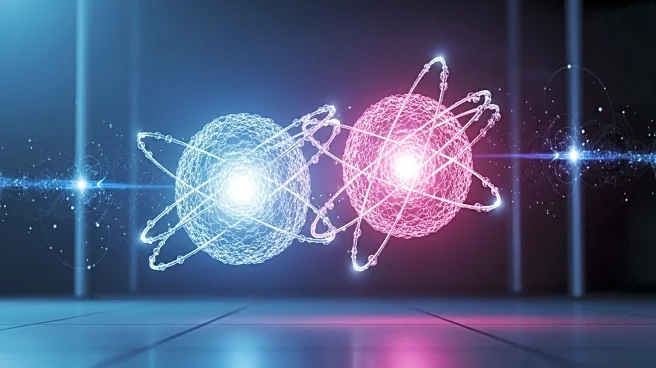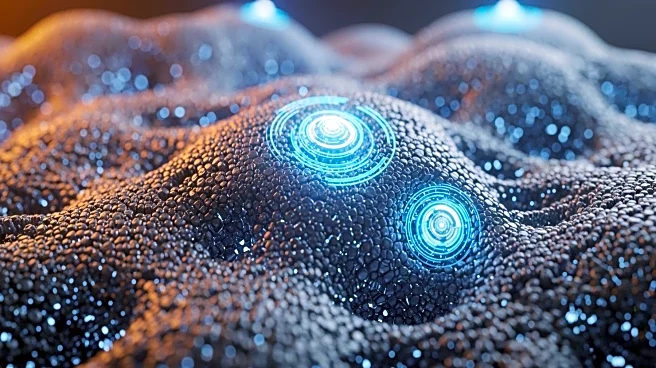What's Happening?
Scientists have successfully imaged phasons, a type of atomic vibration, in twisted two-dimensional materials, marking a significant breakthrough in quantum computing. Using electron ptychography, researchers at the University of Illinois at Urbana-Champaign have captured the vibrations in tungsten diselenide, a 2D material. This imaging technique provides unprecedented resolution, allowing scientists to observe atomic movements that were previously theoretical. Phasons, a subset of moiré phonons, arise when two layers of 2D material are slightly shifted, creating a moiré superlattice. This discovery could lead to better control over heat transfer in electronics, as phasons influence thermal and electronic behaviors in materials.
Why It's Important?
The discovery of phasons in 2D materials has significant implications for the future of electronics and quantum computing. By understanding and controlling atomic vibrations, researchers can develop materials with improved heat conduction properties, potentially leading to more efficient electronic devices. This advancement could pave the way for smaller, faster, and more efficient quantum computing hardware. The ability to observe and measure atomic vibrations directly challenges previous theoretical models, offering new insights into material science and engineering. This breakthrough could transform the design and functionality of electronic devices, impacting industries reliant on advanced computing technologies.
What's Next?
The research opens new avenues for exploring heat behavior in 2D materials at the atomic level. Scientists aim to leverage this understanding to develop materials that enhance heat conduction, potentially revolutionizing electronic device design. Future studies may focus on integrating these findings into practical applications, such as transistors and sensors, to improve their efficiency and performance. The ability to observe atomic vibrations in real-time could lead to innovations in quantum computing, enabling the creation of devices with unprecedented capabilities. Continued research in this area may also explore the broader implications of phasons in other 2D materials.
Beyond the Headlines
This discovery not only advances scientific understanding but also reconciles theoretical models with direct observation. The ability to visualize atomic vibrations challenges long-held assumptions in material science, offering a new perspective on the behavior of atoms. The implications extend beyond electronics, potentially influencing fields such as nanotechnology and materials engineering. As researchers continue to explore the properties of 2D materials, ethical considerations regarding the use and impact of these technologies may arise, particularly in terms of environmental sustainability and resource management.










